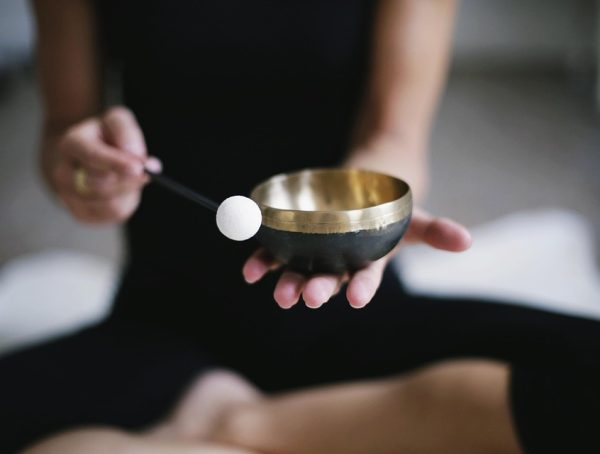The Power of Meditation: Insights into the Three Main Types
In our fast-paced, technology-driven world, meditation offers a refuge, a sanctuary for the mind and soul. It is an ancient practice that has been used for millennia to cultivate a deeper awareness of self, enhance emotional well-being, and instigate profound personal transformation. As we delve into the myriad benefits of meditation, we will explore three of its primary types—mindfulness, loving-kindness, and transcendental meditation—and provide actionable steps for integrating them into your daily life.
Understanding the Three Main Types of Meditation
-
Mindfulness Meditation
Mindfulness meditation is about being present in the moment, acknowledging and accepting one’s feelings, thoughts, and bodily sensations, without judgment. Rooted in Buddhist traditions, this practice encourages observers to focus on their breathing and become aware of their thoughts and feelings as they arise.
Benefits:
- Reduces stress and anxiety
- Enhances emotional regulation
- Improves attention span and concentration
Action Steps:
- Set Aside Time: Start with just 5-10 minutes a day, gradually working up to longer sessions. Choose a quiet space.
- Focus on your Breath: Clear your mind and pay attention to your breathing. Notice the sensation of the breath entering and leaving your body.
- Acknowledge Your Thoughts: When thoughts arise, acknowledge them without judgment and gently bring your focus back to your breath.
-
Loving-Kindness Meditation (Metta)
Loving-kindness meditation, or Metta, involves directing feelings of goodwill, kindness, and warmth toward oneself and others. This practice fosters an open heart, encouraging compassion and connection. It’s particularly effective for alleviating loneliness, resentment, and anger.
Benefits:
- Increases positive emotions and self-acceptance
- Strengthens compassion and empathy
- Enhances overall emotional well-being
Action Steps:
- Begin with Yourself: Sit comfortably and bring to mind someone you love. As you breathe deeply, silently recite phrases wishing them well, such as “May you be happy. May you be healthy. May you be safe. May you live with ease.”
- Extend Your Circle: Gradually include others in your meditation circle, expanding your wishes to friends, acquaintances, and eventually difficult individuals, fostering a sense of compassion for all.
- Cultivate a Sense of Connection: Visualize your heart radiating loving-kindness and positivity to those you wish well, anchoring your practice in a feeling of connection.
-
Transcendental Meditation (TM)
Transcendental Meditation is a form of silent mantra meditation, developed by Maharishi Mahesh Yogi in the 1950s. This technique involves repeating a specific mantra to promote restful awareness and deeper states of consciousness. TM can be especially effective for stress relief and enhancing personal growth.
Benefits:
- Reduces high blood pressure
- Boosts overall cognitive function and creativity
- Promotes a sense of inner peace and calmness
Action Steps:
- Find a Quiet Place: Like other forms of meditation, choose a serene environment free of distractions.
- Choose Your Mantra: Many people use specific phrases or sounds, which are often provided by certified TM teachers. If you don’t have one, simply use a calming word like “peace.”
- Practice Regularly: Set aside time twice a day for about 20 minutes each session. Sit with your eyes closed and repeat your mantra silently, allowing it to bring your focus inward.
Integrating Meditation into Your Life
Meditation is not a one-size-fits-all practice. Each person’s experience with meditation will differ widely depending on their unique personalities, needs, and lifestyles. The key is to find what resonates with you and to maintain a consistent practice.
General Action Steps:
- Create a Dedicated Space: Have a special corner dedicated to your meditation practice. This can be as simple as a cushion or chair where you feel comfortable and relaxed.
- Be Patient: Don’t expect immediate results. Like any skill, meditation takes time to develop. The journey is just as important as the destination.
- Use Guided Sessions: If you’re unsure where to start, many apps and online resources offer guided meditations for all types.
Staying Committed:
- Journal your experiences as you explore different types of meditation. Reflecting on your thoughts can offer insights into your progress and enhance your commitment.
- Consider joining a local group or online community for inspiration and accountability. Knowing others are engaging in the same journey can be incredibly motivating.
A Final Thought
As you embark on the meditation journey, remember that it’s a personal exploration—an evolving practice that seeks to deepen your connection with yourself and those around you. The beauty of meditation lies not just in the techniques, but in the intention behind them: cultivating peace, compassion, and mindfulness in your everyday life.
"Sometimes the most productive thing you can do is relax." – Mark Black
For more inspiration and personal growth content, feel free to follow Kevin on Instagram @KSteineman. Let’s embark on this journey of mindfulness and well-being together!
You might also like
More from Meditation
The Role of Mantras in Transcendental Meditation: A Deep Dive
The Role of Mantras in Transcendental Meditation: A Deep Dive Transcendental Meditation (TM) has garnered a significant following across the globe, …
The Science Behind Meditation: Improving Mental Health Naturally
The Science Behind Meditation: Improving Mental Health Naturally In today's fast-paced world, the pursuit of mental wellness has become paramount. Thousands …
Understanding the 7 Types of Meditation for Beginners
Understanding the 7 Types of Meditation for Beginners: A Path to Inner Peace Meditation has become a popular practice in recent …


































